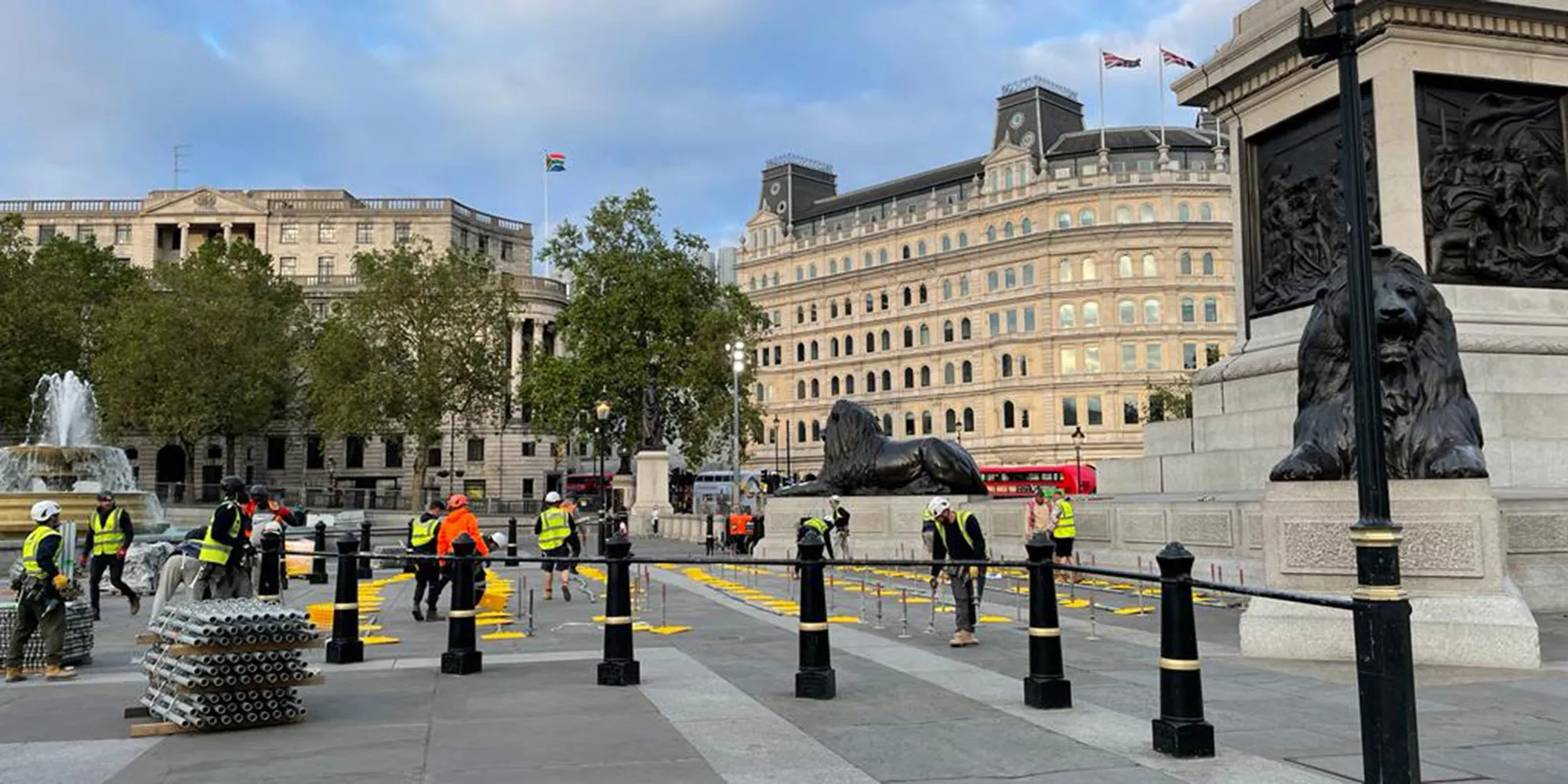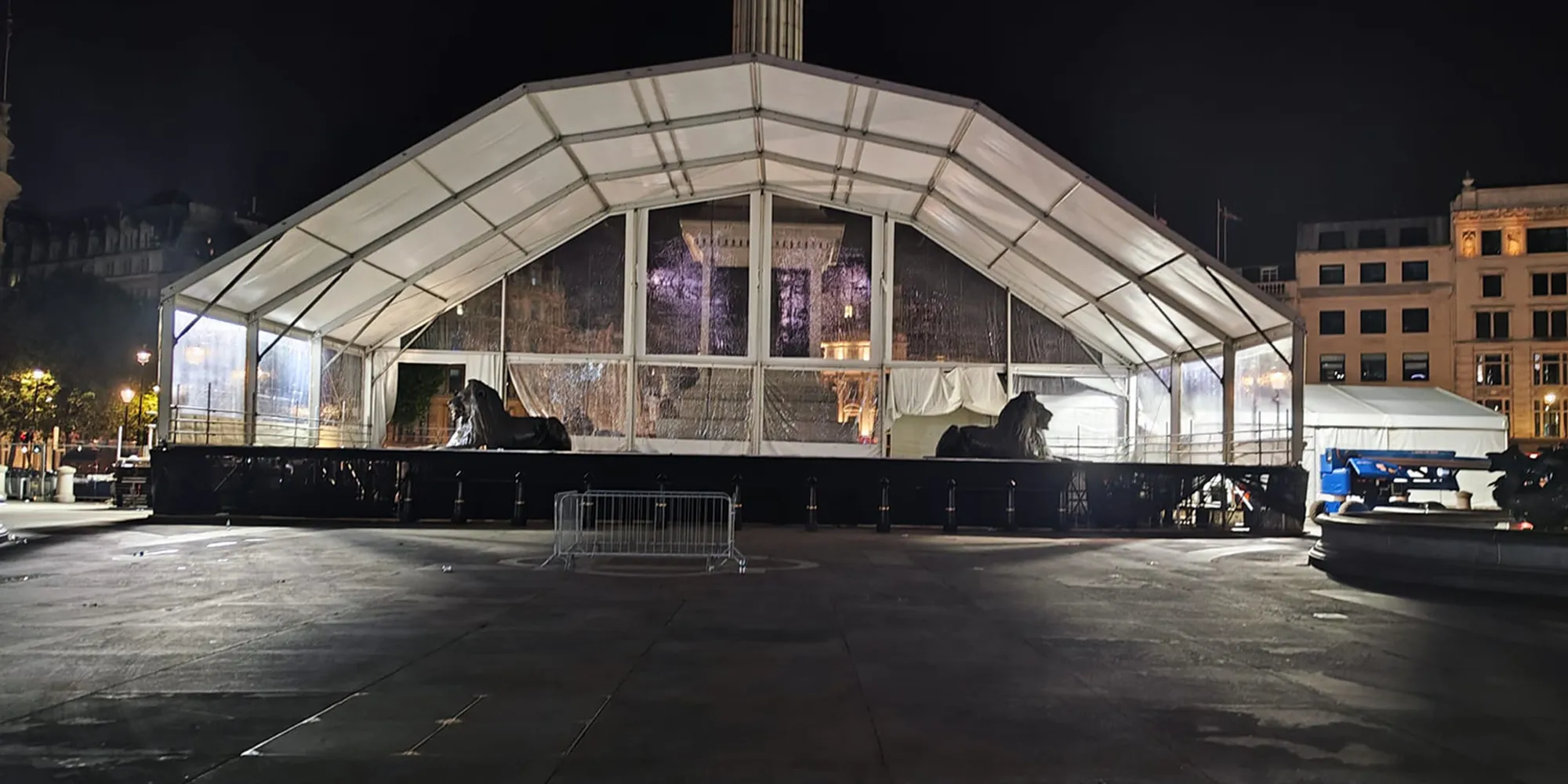
Case Study
Building the Sub-Structure for the LSO’s Free Open-Air Concert in Trafalgar Square
Discover how we constructed the sub-structure for the London Symphony Orchestra's free open-air concert in Trafalgar Square, ensuring a robust stage foundation, rapid assembly, and inclusive design in a historic public space.
Client:
BMW
Date:
Related Services:
Event Structures
Introduction
On June 11, 2022, the London Symphony Orchestra performed a free open-air concert in Trafalgar Square, conducted by Sir Simon Rattle and featuring guest cellist Sheku Kanneh-Mason. While the music took center stage, our role focused exclusively on constructing the sub-structure that would support the main stage flooring, safely house the orchestra, and accommodate audience accessibility requirements. The rapid turnaround and heritage sensitivities of Trafalgar Square posed unique challenges that guided our approach from start to finish.
Sub-Structure Requirements and Engineering
Our goal was to assemble a robust, level base capable of supporting heavy equipment and performers while remaining minimally intrusive to the historic site. We chose a modular system that could be adapted in situ and rapidly built to precise measurements. By conducting thorough ground load assessments beforehand, we ensured that our plan would protect the Square’s surface and handle the weight of cranes, rigging, and the orchestral setup.

Timelines and Logistics
Because Trafalgar Square is a busy public space, we had limited time to complete the build. Our crew worked through Saturday night and into Sunday morning, finishing the sub-structure in just under eight hours. This rapid turnaround allowed the crane to arrive on schedule and position the main stage flooring without delay, preventing disruptions to both the event’s rehearsal schedule and the flow of visitors to the Square.

Accessibility Considerations
Beyond simply supporting the performance area, we also provided solutions for audience members with mobility needs. A step-free, level-access platform with designated wheelchair spaces was integrated alongside areas for those requiring additional assistance. These adaptations enabled all attendees to enjoy the concert, reflecting the event’s commitment to inclusivity in a public, open-air setting.
Conclusion
By executing a swift and carefully engineered build, we helped ensure that the London Symphony Orchestra’s concert proceeded seamlessly, showcasing world-class music in one of London’s most iconic venues. The sub-structure we delivered was safe, reliable, and respectful of its historic surroundings, while also meeting modern standards for accessibility.